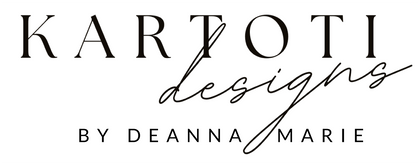You’ve polished up your portfolio, picked out your favorite designs, and you’re finally ready to put your work out there. That’s a big step (and an exciting one!). But how you submit your art can make a huge difference in how it’s received.
I remember when I first started pitching — I had no idea what to include (or not include), and let’s just say... I learned a lot the hard way.
Here are my biggest do’s and don’ts, so you don’t have to learn those lessons the long way.
✅ Do: Research Before You Reach Out
Always do your homework. Make sure your style truly aligns with the brand’s products and vibe. Check their website, Instagram, and even see what they’ve licensed or collaborated on before.
If you love their mission, sustainability efforts, or even a specific product line — mention it. A simple note like, "I really admire your focus on eco-friendly materials," shows them you took the time to connect.
❌ Don’t: Mass Email Everyone
It might feel efficient, but sending the same email to a big list is a quick way to get ignored (or worse, blocked). Brands can tell when you’ve copied and pasted.
✅ Do: Follow Submission Guidelines Carefully
If the brand has submission instructions (often buried in their FAQ or contact pages), follow them to the letter.
This might include:
-
Using an online form rather than emailing
-
Embedding images at specific sizes instead of attaching files
-
Providing certain file types or a specific portfolio link
Following these details not only shows professionalism — it also makes the brand’s job easier (and they will love you for that).
❌ Don’t: Attach Huge Files
Big attachments can crash inboxes or get your email sent straight to spam. Always include links to a clean, easy-to-navigate online portfolio or a published PDF.
And yes — put your contact info on every single page of your PDF. If someone prints out one design to discuss later, they should always know where it came from.
✅ Do: Consider the Timing
Timing really matters. For example, brands usually choose holiday designs (like Christmas or Halloween) six months to a year in advance.
If you’re pitching Christmas designs, start sending them around January to March. Halloween? Aim for February to April.
Knowing this helps you plan ahead — and keeps you from feeling discouraged if they say they're already full for the season.
❌ Don’t: Get Discouraged by a “No”
A “no” doesn’t always mean never — often, it just means “not right now.”
Early on, I used to take rejections personally. But I learned to see them as an open door to keep the conversation going.
When I get a “no,” I usually respond with a thank you and ask if I can reach out again in the future with new work. Most of the time, they say yes — and that’s how you turn a cold contact into a warm lead.
✅ Do: Follow Up (Politely!)
If you don’t hear back, it’s completely okay to follow up after two to three weeks. Keep it short and friendly.
A simple line like, "Just checking in to see if you had a chance to review my portfolio. I’d still love to connect when the timing is right!" can make a big difference.
Final Thoughts
Licensing is really about building relationships — not just one-off transactions. The more thoughtfully and professionally you show up, the more memorable (and irresistible!) your work becomes.
Keep going, stay patient, and keep putting yourself out there. You’re not behind. You’re becoming.
— Deanna Marie

PITCHING EMAIL SWIPE FILES FOR SURFACE PATTERN DESIGNERS
Confidently pitch your work to companies with ready-to-send email templates.
Get Them Here


